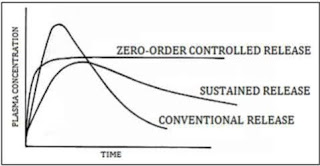Immunology
Immunology Definition
“The
study of the immune system, the
cell-mediated and humoral
aspects of immunity and immune responses.”
Immunology
is a branch of biology involved with the study of the immune system, components
of the immune system, its biological processes, the physiological functioning
of the immune system, types, its disorders and a lot more.
The
immune system acts as a body’s defence system by protecting our body cells,
tissues and organs from invading infections through various lines of defence.
Overall, the immune system functions by recognizing and destroying foreign
antigens including harmful microorganisms and other disease-causing microbes.
Under
certain conditions, when our immune system is weak or stops functioning, this
results in various infectious diseases, such as fever and flu, and may
also lead to dreadful diseases like cancer AIDS, etc.
Also
Read: Immunity
Let
us have a detailed look at Immunology to learn about the immune system, its
different parts, functions and other significance of Immunology.
Immune System
Immune
system consists of different types of cells and organs which protect our body
against pathogens. Pathogens are defined as microorganisms that cause infections in the body such as
bacteria, fungi, viruses and protozoans. Antigens are molecules that
elicit antibody generation. They can be everything that does not belong to our
body, from parasites to fungi, bacteria, viruses, and haptens. Haptens are molecules that can
elicit an immune response when combined with a carrier molecule. All the
cells and molecules of the immune system are distributed in all the tissues of
the body as well as lymphoid organs which eliminate microbial infectious diseases,
decrease the growth of tumours and starts the repairing process of damaged
tissues.
The
tissues and organs of the immune system act as security forces where cells act
as the security guards while molecules act as the guns & bullets and use
the communication system to protect you.
Types of Immune System
We,
humans, have two types of Immune system and are classified based on whether
they are present at the time of birth or not.
- Innate Immune System.
- Adaptive Immune System.
Innate Immune System
Immune
System fights against microbes and prevent their entry inside the body.
Innate
Immune System is composed of cells and proteins that are always present and are
ready to fight against microbes in the infection area. Innate Immune
System is present from the time of our birth.
Main
elements of the innate immune system are –
- Dendritic cells.
- Phagocytic leukocytes.
- Natural killer (NK) cell.
- Physical epithelial barriers.
- Circulating plasma proteins.
Adaptive Immune System
The
adaptive immune system is required to fight against pathogens that cannot be
controlled by innate immune defences. It is also referred to as the acquired
immune system because it is acquired during the course of life. They are
specific to the type of pathogen invading the body.
All
the components of the adaptive immune system are generally inactive however
when activated these components adjust to the presence of all the infectious
agents by proliferating and developing a potent mechanism for eliminating the
microbes.
Two
Types of adaptive responses are – humoral immunity moderated by antibodies
which are developed by B lymphocytes and cell-mediated immunity, moderated by T
Lymphocytes.
Immunology and Diseases
Immunological
diseases are caused by defects in immune system. The immune system may be
hyperactivated to release antibodies and other chemicals. This results in
allergy and anaphylaxis. Sometimes the immune system fails to differentiate self
cells from no-self cells, resulting in autoimmune diseases. In this situation,
the immune system is challenged and evoke responses that damage cells and
tissues rather than protecting. All the immunodeficiency diseases increase the
risk of tumours and infections and are caused by malnutrition, immune
suppresents, gene mutations, and viruses such as HIV.
Also
Refer: Antigens and Immunology
Symptoms of Immune Dysfunction
- Bowel disorders.
- Parasite infections.
- Candida overgrowth.
- Allergies and Asthma.
- Frequent colds and flu.
- Autoimmune disorders.
- Painful joints and muscles.
- Herpes (cold sore) outbreak.
- HPV and abnormal PAP smears.
- Rhinitis or a constant runny
nose.
- Psoriasis, eczema, hives or
rashes.
Immunology Techniques
This
is an experimental method used for studying the structure and functions of the
immune system. There are different techniques, which includes:
- ELISA.
- ELISPOT.
- Immune cell isolation.
- Immuno-histo-chemistry.
- Generation of Antibodies.
- Immuno-blotting and
precipitation.
- Isolation and Purification
of Antibodies.
Applications of Immunology
Immunology
is widely used in numerous disciplines, including medicine, in the fields of
organ transplantation, bacteriology, oncology, virology, parasitology,
rheumatic diseases, psychiatric disorders, and dermatology. The Immunology of
transplantation mainly deals with the process of transplantation from a donor
to the recipient, so that the recipient’s body does not reject the organ.
This
was a brief introduction to Immunology, for more information
on Immunology, immune system, its techniques, notes
for Immunology Class 12, visit us at BYJU’S Biology.
Immunity
In biology, immunity is the state
of being insusceptible or resistant to a noxious agent or process, especially a
pathogen or infectious disease. Immunity may occur naturally or be produced by
prior exposure or immunization.
Types of Immunity
The
body relies on the adaptive immune system and immunological memory to provide
immunity and prevent recurrent infections with the same illness. This can also
be taken advantage of within medicine through things such as vaccinations.
The
various ways in which immunity is developed are generally split into
‘active’ (i.e. due to the body’s own immune response and immune cells)
and ‘passive’ (i.e. as a result of antibodies) immunity. This article
will consider the different types of immunity and finally, their roles within
the immune system.
Active Immunity
Active
immunity is when the body’s own immune system mounts an adaptive immune
response following direct exposure to a disease organism or antigen. It can
develop either naturally or artificially.
Active
immunity, in contrast to passive immunity, takes time to develop but is long-lasting
as it produces memory lymphocytes that recognise the disease and promptly
produce the antibodies needed to fight it.
Natural
Generally
speaking, natural active immunity happens after infection with the actual
disease. Exposure to the pathogen and the subsequent immune response produce
memory cells that can recognise and rapidly respond to the pathogenic agent
on re-exposure.
Artificial
Vaccination
can artificially stimulate active immunity. In brief, this is where the body is
exposed to a dead or weakened form of the pathogen, which, though unable to mount an infection, still activates
the adaptive immune response and memory cell formation.
The
main advantage of vaccination is that it avoids the need for an active
infection to confer immunity which can be fatal in some diseases.
However, some pathogens change their antigen structure over time
(particularly viruses), enabling them to evade immunological memory. This might
necessitate re-vaccination such as the case with the influenza virus vaccine.
Passive Immunity
Passive
immunity relies on antibodies rather than memory cells. In brief,
It involves the introduction of ready-made antibodies to a non-immune
individual.
Passive
immunity is short-lived (because there are no memory cells) but
beneficial where there is a high risk of infection, and the body is unable to
develop its own immune response or synthesize its’ own antibodies. It can also
alleviate the symptoms of some diseases and treat certain infections that have
no available vaccine (e.g. Ebola virus).
Furthermore,
they can be used prophylactically in immunodeficient patients and where
there is insufficient time for the body to develop its own immune response. for
example, antivenom serum for poisoning.
Natural
Passive
immunity can be passed down in the form of IgG from mother to foetus.
IgG is the only antibody subtype that can cross the placenta and subsequently
provides protection for 4 to 6 months after birth.
After
that, maternal antibodies are gradually degraded as the infant’s immune system
continues to develop until it reaches maturity at around 5 years of age.
IgA antibodies present in breast milk can also transfer passive
immunity. IgA coats the gastrointestinal tract of the infant, protecting
against bacterial infections until the newborn’s immune system is mature enough
to produce its own antibodies. This immunity is short-lived, and vaccination is
required shortly after birth to prevent diseases such as tuberculosis and
hepatitis B.
Artificial
IgG
antibody transfer can provide artificial passive immunity.
These
can be through several ways:
- Human or animal blood products – serum or plasma
- Pooled human immunoglobulin – intravenous, subcutaneous or intramuscular
immunoglobulin from immunised donors or those recovering from the disease.
- Monoclonal antibodies
The
protection conferred is immediate but temporary. Furthermore, as the body does
not develop memory cells, the patient is at risk of disease relapse or
re-infection unless they develop active immunity.

Active vs. Passive Immunity – Summary

Frequently Asked Questions on Immunology
Q1
What is ELISA?
Enzyme-Linked
ImmunoSorbent Assay is known as ELISA. It uses antibodies to detect the
presence of certain proteins in the sample. ELISA is used as a diagnostic tool.
Q2
What is hay fever?
Hay
fever is the allergic response to certain allergens from the environment such
as pollens, dust mites and fur.
Q3
What is graft rejection?
Graft
rejection is the immune response happening in the recipient’s body, that
attack and destroys the donated organ.
Q4
What is histocompatibility?
Histocompatibility
is the property of having similar alleles in the Major Histocompatibility
Complex [MHC]. It is required for organ transplantation.
Q5
Is thymus present in adults?
The
thymus is active till puberty and after that, it slowly degenerates and is
replaced by fat tissues.



Comments
Post a Comment
Thanks